 Seishi Namiki (Fall 2025)
Seishi Namiki (Fall 2025)Distinguished Atsumi Visiting Professor
Professor emeritus, Kyoto Institute of Technology (京都工芸繊維大学), and director of the Kyoto Institute of Technology Museum and Archives. Professor Namiki began his career as a curator at the Tokugawa Art Museum and as assistant professor at Kyoto University before moving to K.I.T. His publications include, A Turning Point in Japanese Painting “Illustrated Scroll of the Debate on Sake and Rice”: From the Age of Illustrated Scrolls to the Age of Genre Paintings (Shōwadō, 2017), The Change of Paintings: The Magnificent Flowering of Japanese Art (Chuko Shinsho, 2009), among others. He has curated many exhibitions on a wide range of topics and most recently was curator of Shutendoji Begins: Tales of the Demon Slayer Throughout the Ages at the Suntory Museum of Art in Tokyo.
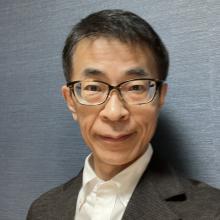 Takeshi Noguchi (Spring 2024)
Takeshi Noguchi (Spring 2024)Upon graduating from Tokyo University, Takeshi Noguchi was a curator at the Museum of Kyoto and is currently the Director of the Curatorial Division at the Nezu Museum where he serves on the board as well. As a specialist of pre-modern Japanese paintings, his research includes art by Tawaraya Sōtatsu, Sakai Hōitsu, Suzuki Kiitsu and the Rinpa School, and Maruyama Ōkyo. He has curated numerous exhibitions including The Blooming of Hundreds of Flowers: Painters of Edo Period Kyoto in the Heian jimbutsushi (1988) and The Kano School and the Art World of the First Half of the 18th Century in Kyoto (2004) at the Museum of Kyoto, and Irises and Eight Bridges: Masterpieces by Ogata Kōrin from the Nezu Museum and the Metropolitan Museum of Art (2012), Kōrin and Kenzan: Brother Artists, Resonating Aesthetics (2018), and Suzuki Kiitsu’s Mountain Streams in Summer and Autum (2021) at the Nezu Museum. In addition, he is a contributing author to Art History of the Imperial Court, vol. 4: The Early Edo Period: The Elegance of the Early Modern, the Flowering of Court Paintings (Yoshikawa Kobunkan, 2017).
 Masaaki Arakawa (Fall 2023)
Masaaki Arakawa (Fall 2023)Distinguished Atsumi Visiting Professor
Masaaki Arakawa is a professor of Japanese art history at Gakushuin University in Tokyo where he teaches on various topics in East Asian ceramics. As a specialist of Japanese ceramics his wide-ranging research interests cover ancient to medieval pottery, Momoyama period chawan (tea bowls), and porcelain from the Edo to modern periods. His recent inquiries explore the connections between food with ceramics and chanoyu. His publications include The Life of Hazan Itaya (2001), How to Look at Ceramics (2004), and he was the editorial supervisor of the Complete Works of Japanese Art 10: Wabi and gold, the Momoyama period (2014), Designs: The World of Large Plates, Imari (2013).
 Julie Nelson Davis (Spring 2023)
Julie Nelson Davis (Spring 2023)Julie Nelson Davis is Professor of the History of Art at the University of Pennsylvania. Her research engages Japanese prints, illustrated books, and paintings from the eighteenth through the twentieth century. Her books include Utamaro and the Spectacle of Beauty (2007 and 2021), Partners in Print: Artistic Collaboration and the Ukiyo-e Market (2015), and Picturing the Floating World: Ukiyo-e in Context (2021). Davis was lead curator for Arthur Tress and the Japanese Illustrated Book (2022) at Penn. Her current project, The Ghost in the Brush: Imitation, Homage, and Fabrication in Ukiyo-e Painting, was supported by a Guggenheim Fellowship (2021).
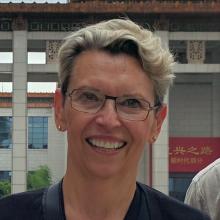 Alfreda Murck (Fall 2022, Spring 2019)
Alfreda Murck (Fall 2022, Spring 2019)An independent scholar of Chinese visual culture, Alfreda Murck lived in Asia as a student and professional for almost three decades, most recently in Taiwan and China from 1991 to 2013. In Beijing she taught at the Central Academy of Fine Arts and at Peking University and also worked part time at the Palace Museum. She has authored various articles on Chinese painting and visual culture and a book titled Poetry and Painting in Song China: The Subtle Art of Dissent (Harvard University Asia Center). In 2013 she curated the exhibition Mao’s Golden Mangoes and the Cultural Revolution (Rietberg Museum Zurich). Before 1991 she was Associate Curator and Administrator of the Asian Art Department at The Metropolitan Museum. She received her PhD from Princeton University.
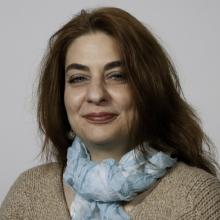 Monika Bincsik (Fall 2022)
Monika Bincsik (Fall 2022)Monika Bincsik is the Diane and Arthur Abbey Associate Curator for Japanese Decorative Arts at The Metropolitan Museum of Art. From 2008 to 2009 she was a Jane and Morgan Whitney Research Fellow at The Met. Later she worked as a research assistant at Ritsumeikan University in Kyoto, where she earned a second PhD on Japanese lacquers. From 2013 to 2015 she was an Andrew W. Mellon Curatorial Fellow at The Met and became Assistant Curator in 2015 then Associate Curator in 2018. She has organized numerous exhibitions for the museum, notably “Kimono Style: The John C. Weber Collection” (2022); “Kyoto: Capital of Artistic Imagination” (2019); “Japanese Bamboo Art: The Abbey Collection” (2017); and “Discovering Japanese Art: American Collectors and the Met” (2015). She has published extensively on Japanese decorative arts and collecting history, recently in Kimono Style: Edo Traditions to Modern Design (The Metropolitan Museum of Art, New York, 2022) and The Tale of Genji: A Japanese Classic Illuminated (The Metropolitan Museum of Art, New York, 2019).
 Jordan Sand (SPRING 2022)
Jordan Sand (SPRING 2022)Distinguished Atsumi Visiting Professor
Jordan Sand is Professor of Japanese History and Culture at Georgetown University in Washington, DC. (Joint Appointment, Waseda University, Tokyo). He holds a masters degree in architecture history from the University of Tokyo and a doctorate in history from Columbia University. His research focuses on urbanism, material culture and the history of everyday life. He is the author of House and Home in Modern Japan, Tokyo Vernacular: Common Spaces, Local Histories, Found Objects (University of California Press, 2013) and 帝国日本の生活空間 (Living Spaces of Imperial Japan; Iwanami shoten, 2015). He has published widely on topics in Japanese cultural history, including urban fire and disaster resilience, historical memory, museums and cultural heritage policy, and the history of food. He is presently writing a book about the history of reconstruction at the Ise Shrines.
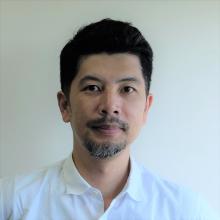 Ryusuke Masuki (Fall 2019)
Ryusuke Masuki (Fall 2019)Distinguished Atsumi Visiting Professor
Ryūsuke Masuki has been associate professor of Japanese and Chinese art history at Kobe University since 2013. From 2004 to 2013, he was a specialist in Japanese painting at the Agency for Cultural Affairs of the Government of Japan after serving as Curator of Buddhist painting at The Museum Yamato Bunkakan in Nara from 1999 to 2004. His research focuses on Buddhist paintings of the Heian period (794-1192) with an emphasis on their relations to paintings of the Tang, Five Dynasties, and Song dynasties of China, and on the techniques, embellishments, and the context of their production related to rites and rituals. His recent research has focused on the iconography of Fugen-bosatsu and Kujaku-myōō paintings in Japan and China. Recent publications include A Study on the Interaction between Buddhist Paintings of the Heian Period and Paintings of Medieval China (2015) and Art History of the Imperial Court, Vol.1 (2018). Professor Masuki earned his doctorate from the University of Tokyo.
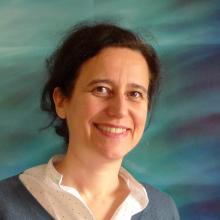 Estelle Bauer (Spring 2019)
Estelle Bauer (Spring 2019)Estelle Bauer is professor of Japanese art history at Inalco (National Institute for Oriental Languages and Civilizations) in Paris. Her research focuses on narrative painting with an emphasis on the evolutions of systems of representation between the eleventh and seventeenth century, poetics of images, and on the history of discourses on pictures. Her current research interest lies in the paintings of the Tale of Genji. She continues to co-lead research groups on The Illustrated Scroll of the Wine and Rice Debate (Shuhanron emaki) and on Honchō gashi, and is collaborating as guest curator for an exhibition of Japanese narrative art in Europe. Trained at Paris-Sorbonne, Jissen and Gakushūin universities, she received her Ph.D. from Inalco and has also taught at the Ecole du Louvre and Heidelberg University.
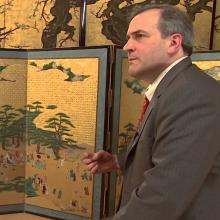 John Carpenter (Fall 2018)
John Carpenter (Fall 2018)John Carpenter is the Mary Griggs Burke Curator of Japanese Art at The Metropolitan Museum of Art where he has been a curator since 2011. Previously, from 1999 to 2011, he taught the history of Japanese art at the School of Oriental and African Studies (SOAS), University of London, and served as Head of the London Office of the Sainsbury Institute for the Study of Japanese Arts and Cultures. He has also taught courses at the University of Heidelberg, and from 2009 to 2011 he was Visiting Professor at the University of Tokyo. He has published widely on Japanese art, especially in the areas of calligraphy, painting, and woodblock prints. His recent publications based on Met exhibitions include Designing Nature: The Rinpa Aesthetic in Japanese Art (2012) and The Poetry of Nature: Edo Paintings from the Fishbein-Bender Collection (with Midori Oka, 2018). At present he is working on an exhibition and catalogue project focusing on the art of The Tale of Genji.
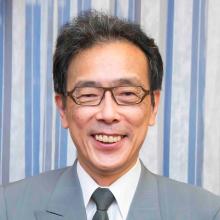 Arata Shimao (Spring 2018)
Arata Shimao (Spring 2018)Distinguished Atsumi Visiting Professor
Arata Shimao is Japan’s leading scholar in the field of medieval (Muromachi period, 14th–16th c.) painting in monochrome ink. He has been a professor for the history of Japanese Art at Gakushūin University, Tokyo, since 2012. Upon receiving his M.A. from Tokyo University, he became a researcher at the Tokyo National Research Institute of Cultural Properties in 1984, then was a professor at Tama Art University from 2002 to 2012. He is a member of the board of trustees of the Nezu Art Museum and is on the council for the National Agency for Cultural Affairs.
His research interests focus primarily on premodern Japanese painting with a special emphasis on Sino-Japanese painting and Karamono (imported Chinese painting, calligraphy and decorative arts), of the Muromachi period. In, Hyōnen-zu: Iconology of Catfish and Gourd (1995), he examined the meaning of a “new mode” written in the iconographical structure of Sino-Japanese painting of this age. From Nōami to the Kano School (1994) and Wa Kan no Sakai wo Magirakasu: the Idea of Chanoyu and Japanese Culture (2013), analyze the social function of Karamono and the cultural structure of Wa (Japanese) and Kan (Chinese). His research on the Zen monk painter Sesshū examined the legend of this painter and presented new interpretations of his life and masterpieces in, Sansuichōkan (Long Landscape Scroll) by Sesshū (2001) and For a Deep Understanding of Sesshū (2012). He co-curated a special exhibition on Sesshū for the Tokyo and Kyoto National Museum in 2002 and Yamaguchi Prefectural Museum in 2006. He has a wide interest in ink painting, including contemporary painters and materials such as, sumi, fude and paper, and his forthcoming book Ink Painting will be a survey ofink (shuimu or suiboku) culture in East Asia.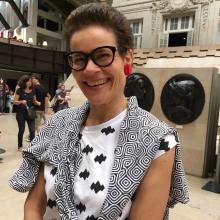 Melanie Trede (Spring 2018)
Melanie Trede (Spring 2018)Melanie Trede is professor for the histories of Japanese art at Heidelberg University since 2004. Among her research and publishing interests are Japanese narrative paintings, gender issues and political iconographies, art terminologies and the concept of the frame in transcultural engagements as well as digital art history.
She is the author of Image, Text and Audience: The Taishokan Narrative in Visual Representations of the Early Modern Period in Japan (2003), Hiroshige. One Hundred Famous Views of Edo (2007/re-published 2010 and 2015), “Terminology and Ideology: Coming to Terms with “Classicism” in Japanese Art Historical Writing”, 2003, “Banknote Design as a Battlefield of Gender Politics and National Representation in Meiji Japan,” 2008, “The Chinese render everything simple”: East Asian and European Negotiations on Perspective” (2015), and most recently “The Hat Maker: A newly discovered handscroll in the Berlin Asian Art Museum” (2017). She was also the leader and editor of the digital project "The Hachiman Digital Handscrolls", launched in 2015.
Trained at Berlin Free University, Heidelberg, Waseda and Gakushūin Universities, she was an assistant professor at Heidelberg, Columbia and New York Universities. She was a research fellow at Gakushuin University, a fellow at the Institute for Advanced Study in Berlin, and at the Marsilius Kolleg at Heidelberg University. She served also as the Toyota Visiting Professor of Japanese Studies at the University of Michigan, Ann Arbor, and in 2012 Trede was appointed both, a member of the Berlin-Brandenburg Academy of Sciences and Humanities, and of the Academia Europaea.
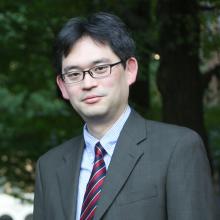 Akira Takagishi (Spring 2017)
Akira Takagishi (Spring 2017)Akira Takagishi is a specialist in Japanese art history, especially on hanging scrolls and handscrolls from the Medieval period. Upon receiving his doctorate from Tokyo National University of Fine Arts and Music, he was a Research Fellow at the Japan Society for the Promotion of Science, and then a curator at The Museum Yamato Bunkakan. He was also Associate Professor at the Tokyo Institute of Technology, and is currently Associate Professor in the Graduate School of Humanities and Sociology at the University of Tokyo. In addition, in 2011 he was the Ishibashi Foundation Guest Professor at the University of Heidelberg, Germany His research focuses on Yamato-e paintings of the Medieval period in Japan. His publication, “A Study of the Ten Realms of Existence Screens in the Taimadera Okunoin Temple Collection,” received the prestigious Kokka Prize in 1998. In 2011 his article, “A Study of the Execution and Appreciation of Picture Handscrolls in the Muromachi Period,” was awarded the JSPS Prize. He is also interested in topics such as the political context of painting production amidst power struggles in Medieval Japan, and in the establishment of the institutional structures of the Tosa School. He will be the chief editor of the forthcoming volume, Art History of the Imperial Court 『天皇の美術史』(Tokyo, Yoshikawa Kobunkan).
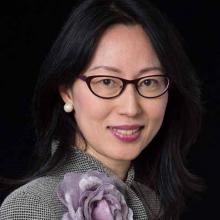 Soyoung Lee (Fall 2016)
Soyoung Lee (Fall 2016)Barbara Bass Bakar Director, CEO, Asian Art Museum, San Francisco
Soyoung Lee is the Langdon and Lavinia Clay Chief Curator at the Harvard Art Museums. She was formerly the Curator of Korean Art in the Department of Asian Art at the Metropolitan Museum of Art. At the Met, Lee organized numerous exhibitions including, “The Art of the Korean Renaissance (1400–1600),” and “Silla Korea’s Golden Kingdom.” She received her degrees from Columbia University and was a visiting professor who taught a seminar on the ceramic arts of Korea and Japan.
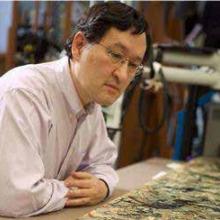 Arnold Chang (Fall 2016)
Arnold Chang (Fall 2016)Arnold Chang (Zhang Hong) was born in 1954 in New York City. He studied art history with Professor James Cahill and holds a master’s degree from the University of California, Berkeley, and a bachelor’s degree from the University of Colorado. Chang studied painting and connoisseurship with C.C. Wang for twenty-five years, and also studied painting with Kuo Yen-ch’iao in Taipei and calligraphy with Wang Chiyuan in New York. His landscape paintings have been exhibited internationally and are in the permanent collections of many museums, including the Metropolitan Museum of Art, British Museum, Asian Art Museum, LACMA, The Art Institute of Chicago, The Minneapolis Institute of Arts, The Brooklyn Museum, and the Phoenix Art Museum. Chang has organized several exhibitions, and is the author of a book and numerous exhibition catalogues and articles on Chinese painting. Chang served for many years as Vice President and Director of Chinese Paintings at Sotheby’s, where he is presently a consultant, and was formerly a painting specialist at Kaikodo gallery in New York.
 Michio Yonekura (Fall 2016)
Michio Yonekura (Fall 2016)Distinguished Atsumi Visiting Professor
Michio Yonekura is an art historian specializing in Japanese painting. After he received his MA at the Tokyo National Institute of Fine Arts and Music, he joined the Tokyo National Research Institute of Cultural Properties, where he engaged in research and study of Japanese art for twenty-five years, serving as Director of the Department of Archives from 1998 to 2001. He then became professor in the Faculty of Liberal Arts at Sophia (Jōchi) University in Tokyo, and taught Japanese art history there until 2011. He has been a visiting professor and given lectures on medieval Japanese portraiture and narrative painting at Heidelberg University, Waseda University, and Harvard University. Professor Yonekura's primary field of research is medieval Japanese painting. By focusing on the visual representation of the subjects in portraiture, landscape, and narrative paintings of the 13th and 14th century (Kamakura-Nanbokuchō periods), he has sought to re-examine traditional master narratives of Japanese art history. His research has been published in books and articles on the iconic Jingoji portraits and illustrated biographies of renowned Buddhist monks. His main current research topic is the late 13th century Illustrated Biography of Ippen.
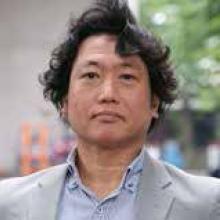 Furuta Ryō (Spring 2016)
Furuta Ryō (Spring 2016)Furuta Ryō is a scholar of modern Japanese art who has curated many exhibitions and has published extensively on painting in Japan in the late-19th and early 20th century. He received the Suntory Prize for his book, Tawaraya Sōtatsu (Heibonsha, 2010), and has also published books about the painters Takahashi Yuichi and Kano Hōgai. Most recently he has co-curated the exhibition, “Sōtatsu: Making Waves” at the Freer Museum / Sackler Gallery.
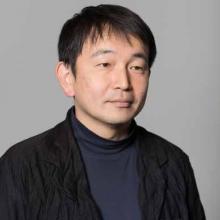 Shimizu Shigeatsu (Winter 2015-2016)
Shimizu Shigeatsu (Winter 2015-2016)Shigeatsu Shimizu is an associate professor at the Kyoto Institute of Technology. He specializes in the theory of architectural restoration in Japan. His book Kenchiku hozon gainen no seisei shi (The Rise of Architectural Preservation in Japan, Chuo Koron Bijutsu Shuppan, 2013) received the Prize of the Architectural Institute of Japan in 2015. He formerly worked as a researcher at the National Research Institute of Cultural Properties, Nara, where he engaged in the research and design work for the reconstruction of the Daigokuden Hall of the Nara Palace Site. Recently he is expanding his interests to a comparative study of ancient architecture and the preservation of urban cultural landscapes in East Asia.
